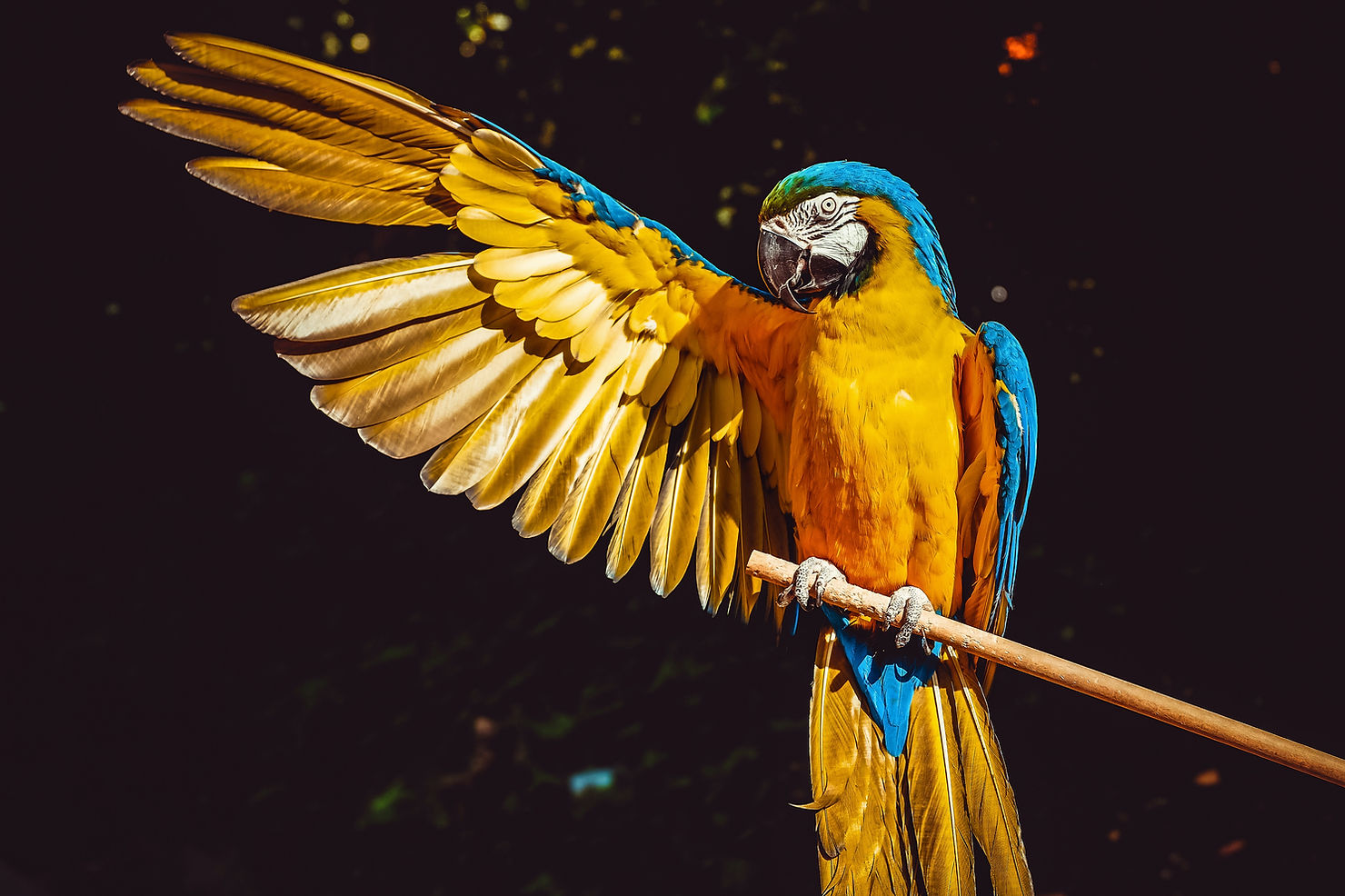Introduction: Your Passport-Ready, Winged Roommate
Parrots and companion birds bring color, music, and unmistakable personality into a home. Yet few owners consider the day they might need to move abroad—with a creature that can’t simply ride in a carrier under the airline seat. The good news? With the right knowledge, bird relocation—even trans-continental—can be smooth and safe.
Whether you keep a chatty budgie or a 1 kg macaw, let’s dive into everything you—and your future border agents—need to know.
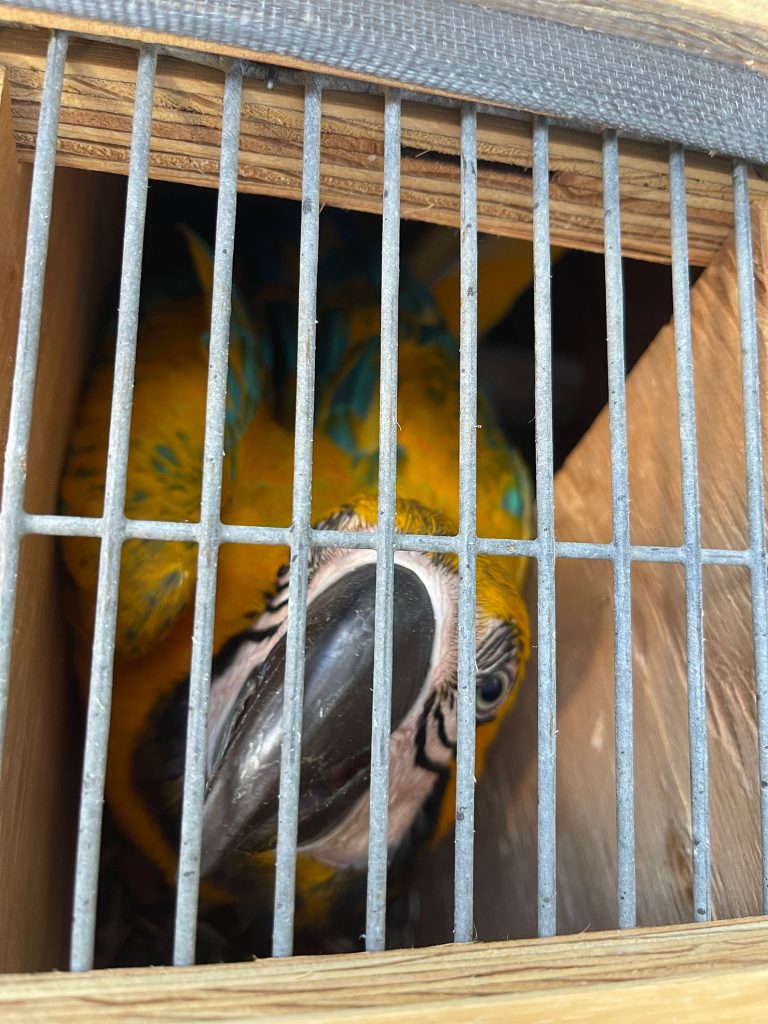
1 | Know Your Flock: Size and Species Drive Everything
Small & Medium Companions
- Budgerigar (Budgie) – social, hardy, 15-year lifespan
- Cockatiel – gentle, whistling charmers, 20+ years
- Conures (Green-cheek, Sun) – playful, moderately loud
Large Parrots
- African Grey – 400–600 g, famed talkers, 50+ years
- Amazon Parrots – 500–700 g, bold, spirited singers
- Macaws – up to 1.5 kg, 4 ft wingspans, 60–80 years
Soft-bills & Exotics
- Toucans, Mynahs, Lorikeets—each with special dietary or permit needs
Why it matters: enclosure size, diet, enrichment, and bird transport crate dimensions all scale with species.
2 | Daily Care Fundamentals
Housing & Environment
| Bird Size | Minimum Indoor Flight Cage* | Ideal Room Temp | UV/Full-Spectrum Light |
| Small | 24 in W × 18 in D × 24 in H | 70–78 °F (21–26 °C) | 4–6 hr/day |
| Medium | 30 × 22 × 36 in | 68–80 °F | 6–8 hr/day |
| Large | 36 × 28 × 48 in (plus play-gym) | 68–82 °F | 8+ hr/day |
*Always larger if possible; outdoor aviaries boost well-being.
Diet
- Staple: Vet-approved pellets (60–70 %)
- Fresh produce: Dark leafy greens, carrots, peppers (20–30 %)
- Nuts & seeds: Training treats, not free-choice (5–10 %)
- Species exceptions: Lorikeets need nectar; soft-bills need low-iron fruit
Enrichment & Socialization
- Rotate foraging toys weekly
- Provide at least 2 hr of out-of-cage flight/play (large parrots)
- Use positive-reinforcement training to avoid boredom screaming
Health Maintenance
- Weigh weekly—sudden 10 % loss = vet trip
- Trim nails/have a groomer trim flight feathers if necessary
- Annual avian-specific wellness exam
3 | Common Health Issues—and Preventive Care
| Issue | Signs | Prevention |
| Nutritional deficiencies | Poor feather quality, seizures (low Ca) | Balanced pellets, UV-B |
| Psittacosis (Chlamydia) | Nasal discharge, lethargy | Quarantine new birds, vet screening |
| Aspergillosis | Labored breathing | Keep humidity 40–60 %, clean cages |
| Feather-destructive behavior | Plucking, barbering | Enrichment, rule out parasites, address stress |
Early intervention by an avian vet is cheaper—and kinder—than crisis care.
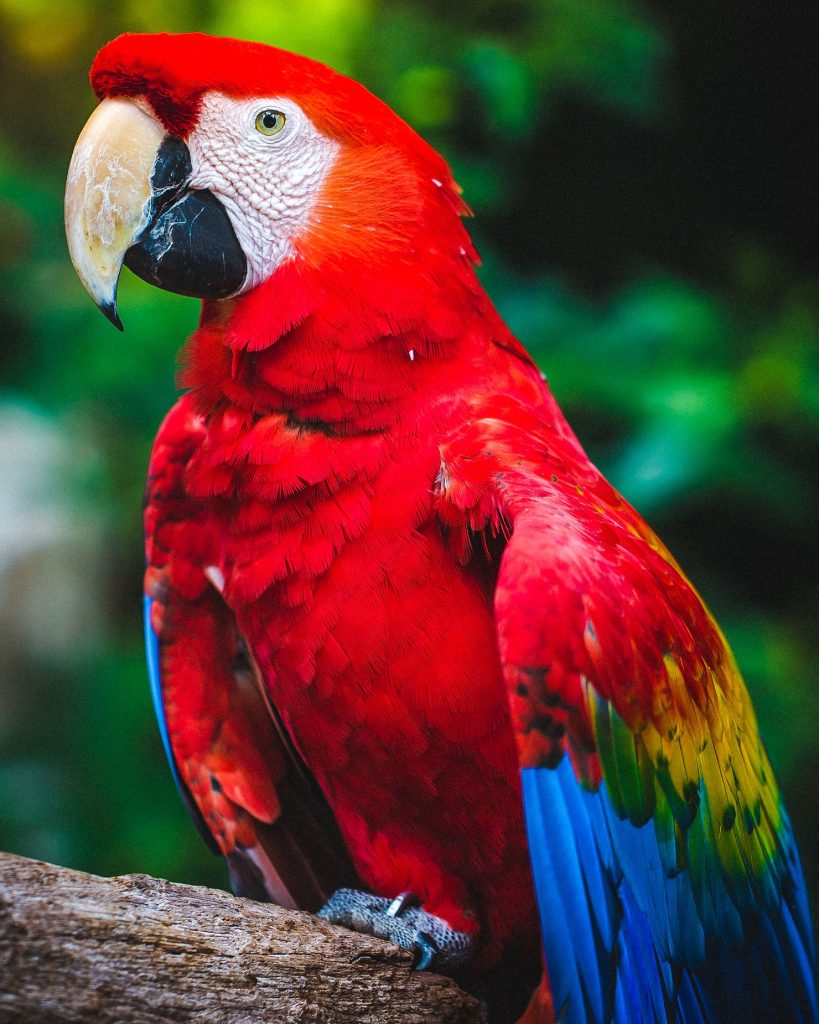
4 | Legal Landscape: Before You Book a Flight
In the United States
- USDA APHIS: Issues VS Form 17-3 (health certificate) for exports
- USFWS: Regulates wildlife; Form 3-177 for most bird shipments
- CDC: Enforces Newcastle & avian influenza restrictions (esp. poultry)
CITES Listings
- African greys, most macaws, amazons = CITES Appendix I or II
- Requires import & export permits + usually a 30-day application window
Destination Country Rules
Every nation sets its own quarantine, microchip, and health-testing protocols—contact their agriculture or environment ministry at least 6 months before moving.
5 | Timeline for an International Bird Move
| Months Before Departure | Tasks |
| 6–9 mo | Verify species legality; book bird relocation consult |
| 4–6 mo | Apply for CITES permits; schedule microchip & bloodwork |
| 2–3 mo | Order IATA-compliant crate; begin crate-familiarization training |
| 1 mo | Final vet exam, USDA endorsement, destination import permit |
| 1 wk | Confirm flight, attach labels, freeze produce for arrival |
| Travel day | Zip-tie food/water dishes, attach documents pouch, deliver to cargo |
6 | Designing the Perfect Travel Crate
- Material: Smooth-sided plastic kennel or plywood with metal mesh front
- Ventilation: Minimum 16 % of wall surface, three sides
- Perch: Bolted hardwood perch sized for bird’s foot span
- Absorbent bedding: Paper or clean pine shavings (no cedar)
- Food/Water: Clip-on dishes reachable without head scraping
- Labels: “LIVE BIRD – KEEP UPRIGHT,” IATA code “AVI” + temperature limits
Tip: Start crate happy-training 8 weeks out—feed meals inside the crate; play recorded airport sounds to desensitize.
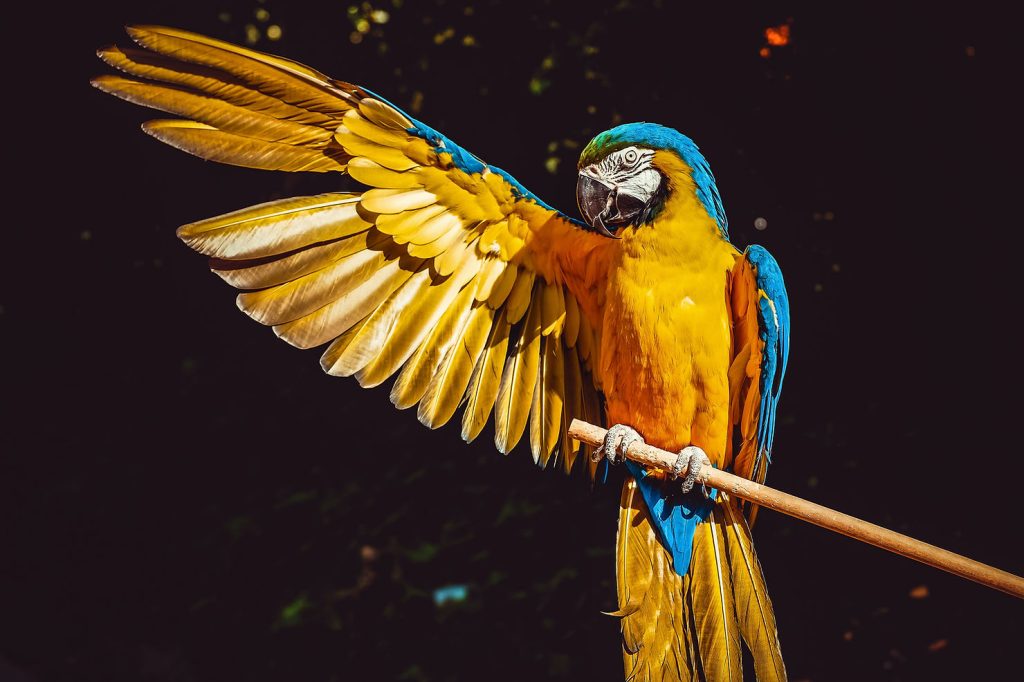
7 | Travel-Day Checklist
- Pre-hydrate with juicy veg (avoid water-bowl spills in transit)
- Attach duplicate documents: permits, health certificate, itinerary
- Confirm aircraft’s live-animal hold has temperature control & pressure regulation
- Avoid sedatives (dangerous for avian respiration)
- Line crate base with frozen gel packs if forecast >85 °F
8 | Arrival & Quarantine
- Many countries mandate 7–30 days in an approved quarantine facility
- Daily video check-ins reduce owner anxiety; ask your transporter
- Post-quarantine: Gradual re-integration to new home, maintain diet/lighting schedule
9 | Top 5 Mistakes First-Time Movers Make
- Under-estimating permit lead time → shipment delay fees
- DIY wooden crates that airline rejects at check-in
- Incorrect diet during layovers → hypoglycemia in small parrots
- Ignoring acclimation training → panic in crate, feather damage
- Choosing cheapest carrier vs. avian-experienced airline
Avoid them by partnering with a specialist in parrot relocation services.
10 | Transcon Pet Movers: Your Bird’s Co-Pilot Across Borders
We’ve flown cockatoos to Copenhagen, macaws to Manila, and finches to Frankfurt—each with tailored care. Our bird transport team handles:
- CITES & USDA paperwork—no form left unsigned
- Custom crates meeting IATA LAR, sized to wingspan
- Route engineering to bypass extreme climates & long layovers
- On-airport bird lounges for stress-free transfers
- 24/7 tracking updates until the perch at your new home is warm
Keywords integrated: bird relocation • bird transport • bird import USA • bird export USA • international bird shipping • parrot relocation services
Ready for takeoff? Contact us today and let our avian-savvy team map your bird’s safest journey—so you both land with feathers unruffled.
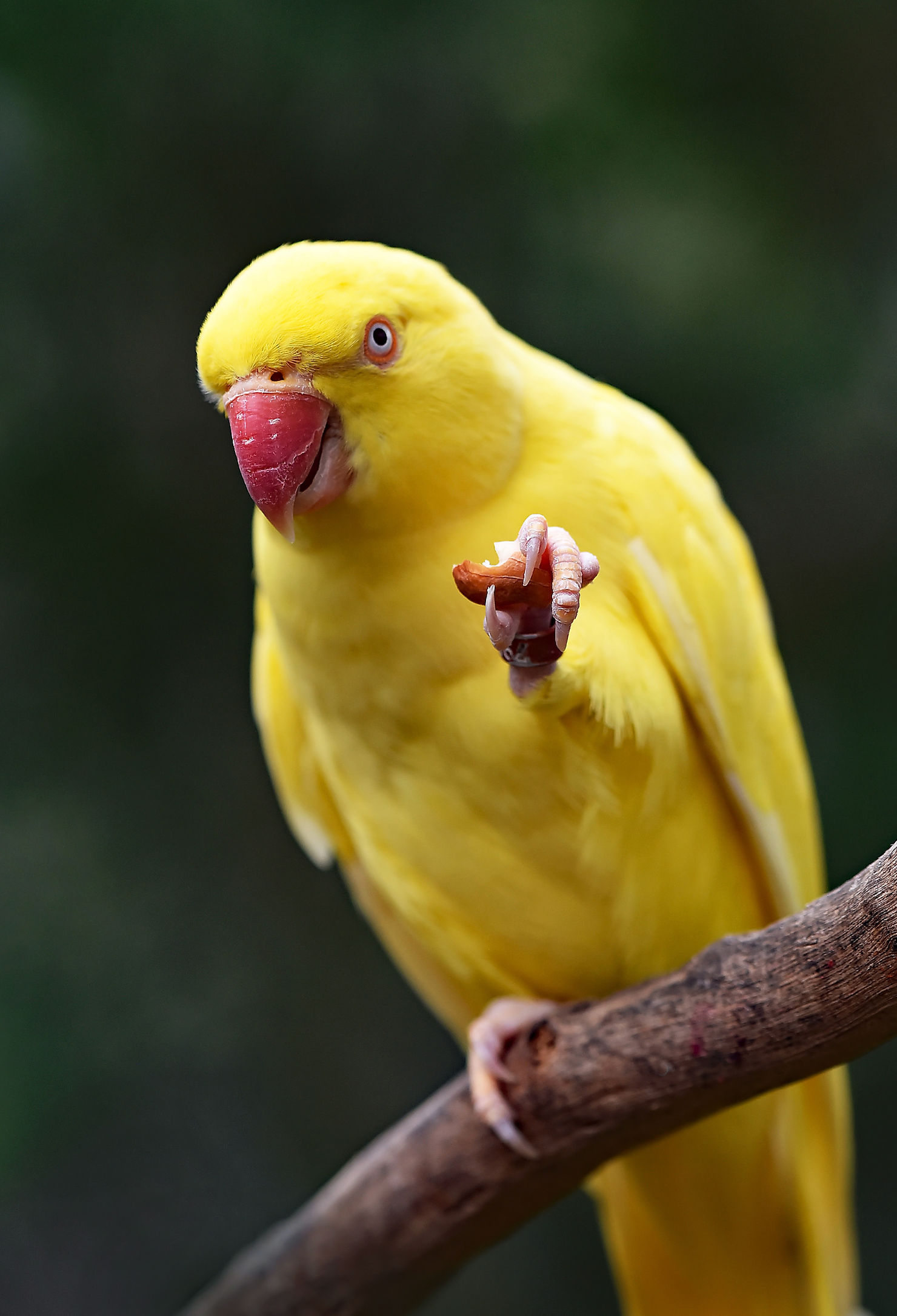
Conclusion: Adventure Awaits—Plan, Prepare, and Fly with Confidence
Birds are brilliant, sensitive, long-lived companions. With diligent husbandry and meticulous planning, they can thrive anywhere on earth—and travel there safely.
Remember:
- Prioritize daily health, diet, and enrichment
- Learn and honor all legal requirements well in advance
- Partner with experts for stress-free international bird shipping
Do that, and the world—skyways included—will truly belong to you and your feathered friend.

